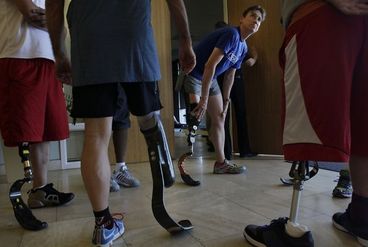
Individuals with disabilities working within athletic often face serious challenges entering the profession. The real issues begin at the athletic training education. A 2006 study of program directors noted that 70% of ATEP programs had admitted a least one student with a disability, yet the number of athletic training majors with a disability nationwide was well below the 9% of general population college students with a disability. A vast majority of the athletic training students with disabilities were diagnosed with a learning disability with rare instances of hearing, vision, motor or emotional disabilities. But we need to have open access to our healthcare profession for everyone.
With that said, naysayers will argue that there are just some things that can’t be accommodated for to have effective outcomes in this profession. With only 10% of Athletic Training education programs having a policy for individuals with a disability applying for admission into the program, the shift of power is given to the ADA (American Disability Act) officer on campus for the institution. The NATA released eight technical standards that ATEP’s could use when admitting students in 2010. The eight standards include: mental capacity to distinguish deviations from the norm, postural/neuromuscular control to perform physical examinations and safely use equipment, communicate effectively and speak English, ability to record examination and treatment plans, maintain composure during high stress, perseverance and commitment to complete the program, flexibility with changing situations and affective skills and demeanor.
While I have seen job qualifications listing ‘able to lift up to 50 lbs’ and ‘ability to stand for long periods of time’ as requirements, you have to wonder, who gets to decide 1) whether these are appropriate requirements for a highly skilled position and 2) if cleared by a physician, why discrimination still occurs, by employers and future colleagues? This blog post is to remind you to have respect, respect for others and respect for the process. With the growing number of students with disabilities in Athletic Training education programs, inclusion is in our future, and we need to be on board.
In researching this topic, I interacted with an athletic trainer that is deaf and he described his hearing impairment as something that is valuable to him because he can tune out the distractions and focus on the task at hand. At the end of the day, the person is an athletic trainer and should not be referred to as the deaf athletic trainer. This disability does not define them and we should not attempt to define them by it either. A person with a disability is just as capable, intellectually, emotionally, and physically. In fact, empathy and compassion for patients might surpass those without disabilities.
Zach Winkelmann LAT, ATC
 RSS Feed
RSS Feed
